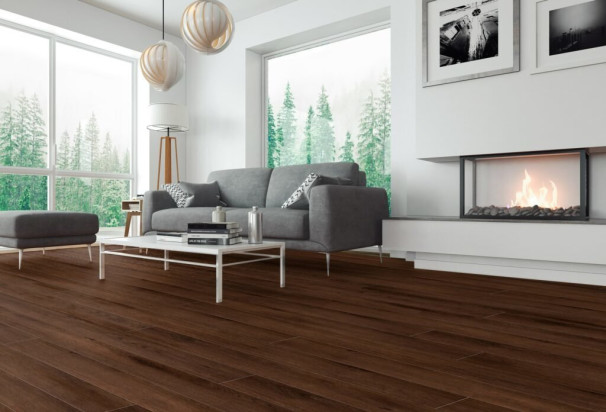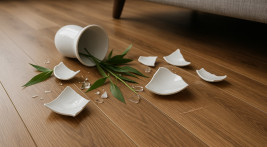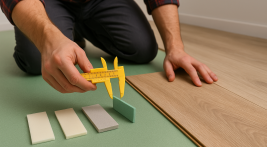Flooring Panels Installed Perpendicular to the Window
This is the main rule for arranging flooring panels in relation to the window. The goal is for the sunlight that falls onto the floor not to highlight the joints between the panels. In many modern designs, such as flooring panels from the Natural collection, the use of V-grooves ensures that even when the panels are laid parallel to the window, the joints still appear elegant. Essentially, this rule aims to eliminate or significantly reduce the potential occurrence of "micro shadows," which mostly appear in panels without V-grooves—which are sold less frequently in Poland each year. In such cases, laying the panels perpendicular to the direction of natural light will make the "micro shadows" more noticeable on the short joints, while they will be practically invisible on the long ones. With panels featuring V-grooves, this issue doesn't arise. While the rule of laying panels perpendicular to the direction of light is not mandatory and won't affect the functionality of the floor, it is important for the visual effect of the finished flooring.
So, to summarize, it is recommended to lay flooring panels perpendicularly. This will better highlight the wood grain, which is certainly something we all expect when choosing panels, such as those with a synchronous or heliocrom structure.
How to Lay Flooring Panels When There Are Multiple Windows
With a single window, the situation is fairly straightforward because we know that it’s best to lay the panels perpendicular to it. But what if there are multiple windows, and the choice of perpendicular arrangement for one window would result in a parallel arrangement for another?
In such cases, it is recommended to focus on the window that is opposite the entrance to the room. This window, which is directly in front of us when we enter the room, will be our point of reference.
Panel Arrangement and the Resulting Effect
When considering how to lay flooring panels in relation to the window, we know that the goal is to "conceal" visible joints between the panels and highlight the structure or pattern. Sometimes, however, the way the panels are laid can affect whether the room feels longer or shorter. Therefore, some people suggest aligning the panels parallel to the longer wall in the room.





